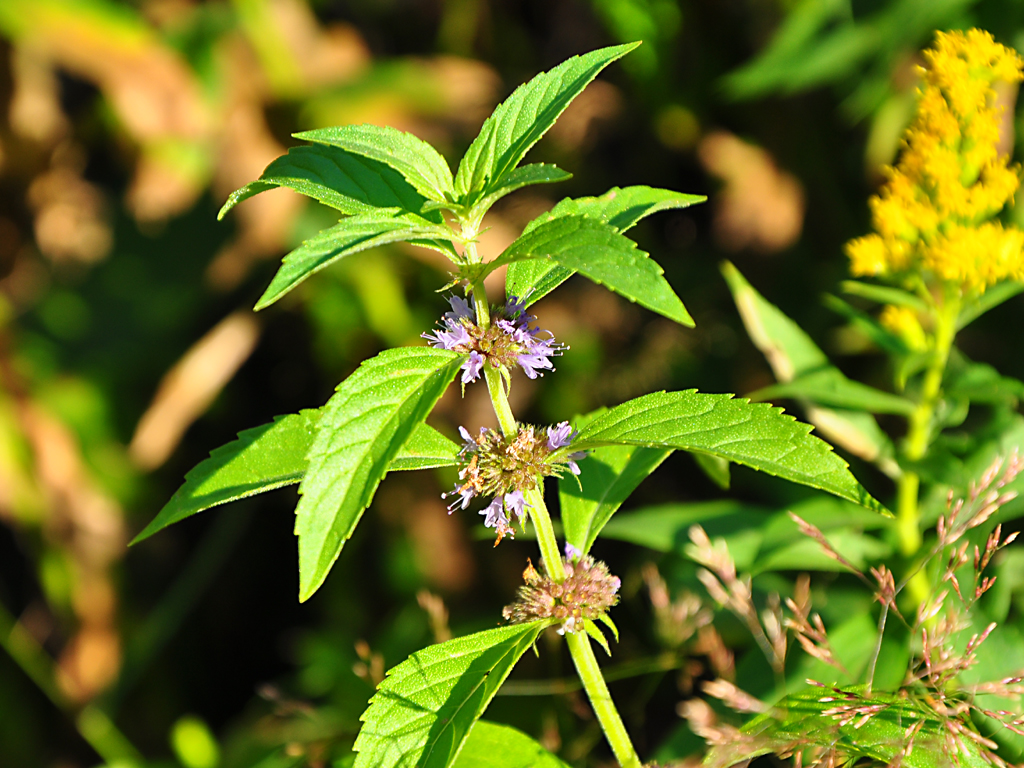Mentha arvensis
- Family: Lamiaceae
- Common Name: wild mint
- Symbol: MEAR4
- Description: Duration: Perennial Nativity: Native Lifeform: Forb/Herb General: Aromatic perennial herb, 15-80 cm tall, from creeping rhizomes and/ or stolons; stems square in cross section, erect, simple or branching, and glabrate or hairy, with the angles more pubescent than sides. Leaves: Opposite and short-petiolate; blades elliptic to lanceolate or ovate, 1-8 cm long and 1-3 cm wide, with serrate margins; surfaces glandular-punctate. Flowers: Lavender to white, in dense clusters in the axils of the upper leaves; calyx a tube topped with 5 triangular teeth, the entire calyx about 3 mm long, usually pubescent and glandular; corolla 2-lipped, purplish to pinkish or white, 4-6 mm long, about twice as long as the calyx. Fruits: Nutlets 4, oviod, smooth. Ecology: Found in moist to damp soil along creeks and slow moving water from 5,000-9,500 ft (1524-2896 m); flowers June-September. Notes: The only native wild mint in the region. It smells distinctly minty and is edible, only a bit less sweet than the cultivated varieties. Distinguish it from other mints (Mentha spp) by its flowers which are only found in clusters at the bases of the leaves. Other Mentha spp in the region are escaped cutivars (M. spicata, spearmint; M. X piperita, peppermint; and M. X. rotundifolia, Egyptian mint) and all have flowers in spikes at the tips of stems and branches. SEINet Portal Network. 2020. http//:swbiodiversity.org/seinet/index.php. Accessed on November 02.
Additional Images
- There are no additional images for this species.
